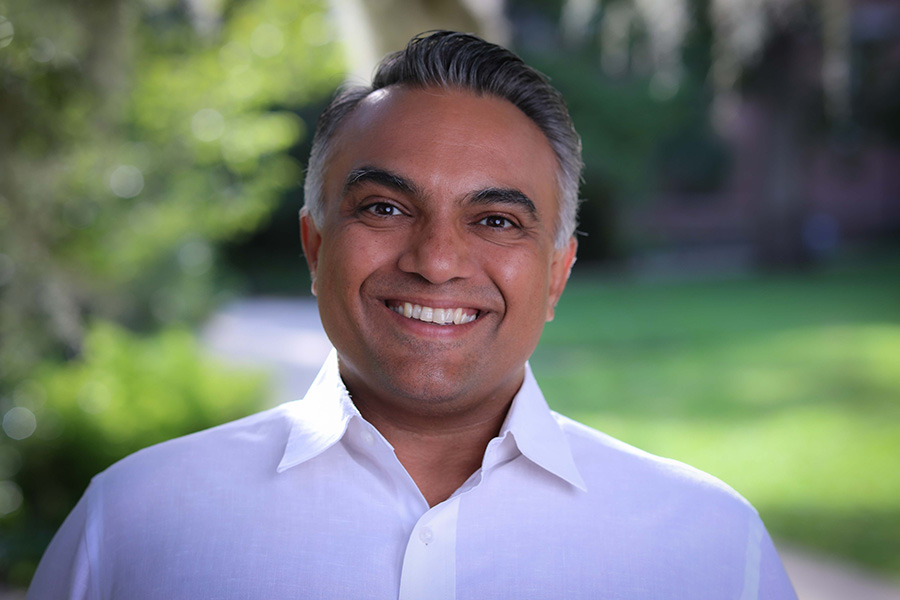FSU researcher receives $1.5M in funding to partner with the Bureau of Ocean Energy Management to identify submerged landscapes

A Florida State University researcher has received $1.5 million in funding to partner with the Bureau of Ocean Energy Management, or BOEM, to study submerged precontact archaeological sites over the next five years in the Gulf of Mexico.
Jayur Madhusudan Mehta, assistant professor in the Department of Anthropology and a faculty affiliate of FSU’s Native American and Indigenous Studies Center, is part of a team to receive the funding, which will help BOEM revise guidelines for managing submerged landscapes found in the federal waters of the Gulf Coast.
“This partnership will allow our team to build better science around the regulatory frameworks surrounding archaeological survey for submerged cultural resources in the Gulf of Mexico,” Mehta said. “In particular, our project uses known sites, known geologic landforms and known ancient human settlement patterns to build models for potential and/or hypothetical site locations in the Gulf of Mexico.”
Researchers estimate that people inhabited the land that is present-day Florida at least 14,550 years ago, when sea levels were approximately 300 feet lower than they are today. At that time, the Florida peninsula spanned an area at least twice as wide as its current form due to the volume of seawater frozen in Ice Age glaciers, and the coastline extended about 100 miles from modern-day shorelines. As the glaciers began to melt and global sea levels started to rise, broad swaths of land these early inhabitants and their descendants lived on became submerged.
Researchers have determined that, in some cases, the archaeological sites these inhabitants left behind have remained intact. Archaeologists have identified several confirmed sites and more than a dozen potential ones off the northeastern Gulf Coast of Florida since the 1980s. These surviving artifacts provide unique information about precontact communities that does not exist on land because these submerged landscapes are the only places where coastal people’s ways of life are preserved.
“Our project notably includes tribal communities at every level of involvement, from project planning, to implementation, to synthesis and analysis. The primary reason we are doing this work is so we can ensure Indigenous and tribal communities have a voice in the study and preservation of their cultural patrimony.”
– Jayur Madhusudan Mehta, assistant professor in the Department of Anthropology
Jessi Halligan, former assistant professor of anthropology at FSU, is an associate professor at Texas A&M University and associate director of TAMU’s Center for the Study of the First Americans and is leading the research team.
“This project is important because we know so very little about early people in and around the Gulf Coast, but also because with increasing offshore development, the sites that can tell us about these people are ever more threatened,” Halligan said. “We need to be able to find the sites in order to manage and preserve them.”
Researchers will first compile offshore survey data collected over the past several decades to put it in one place to determine what is currently known about these submerged landscapes. The team will then conduct an offshore survey in high-priority areas using sonar systems and sediment corers to collect data. This data will be used to create models of locations where these submerged landscapes remain preserved and where archaeological sites are likely to be found. The team will use their findings to make recommendations for best practices needed to locate these precontact sites and inform permitting and avoidance mitigation strategies for future offshore development projects.
“With this field-validated model, we’ll propose new guidelines and parameters to BOEM to ensure that future projects in the Gulf of Mexico, like the construction of wind turbines and oil derricks, will not interfere with or have direct or indirect impacts to Native American, Indigenous and submerged cultural resources,” Mehta said.
According to Halligan and Mehta, the project is among the first of its kind to fully involve tribal communities in the planning process so that Indigenous communities can help decide what portions of their ancestral landscapes are most important to examine and preserve.
“Our project notably includes tribal communities at every level of involvement, from project planning, to implementation, to synthesis and analysis,” Mehta said. “The primary reason we are doing this work is so we can ensure Indigenous and tribal communities have a voice in the study and preservation of their cultural patrimony.”
Florida State University’s Native American and Indigenous Studies Center will be involved in project planning, development and implementation. The project team also includes researchers from the Smithsonian Institution, the University of Tennessee at Chattanooga, and the University of Bradford in the U.K.
For more about Mehta’s work and anthropological research at FSU, visit anthro.fsu.edu.
To learn more about BOEM, part of the U.S. Department of the Interior, visit boem.gov.
